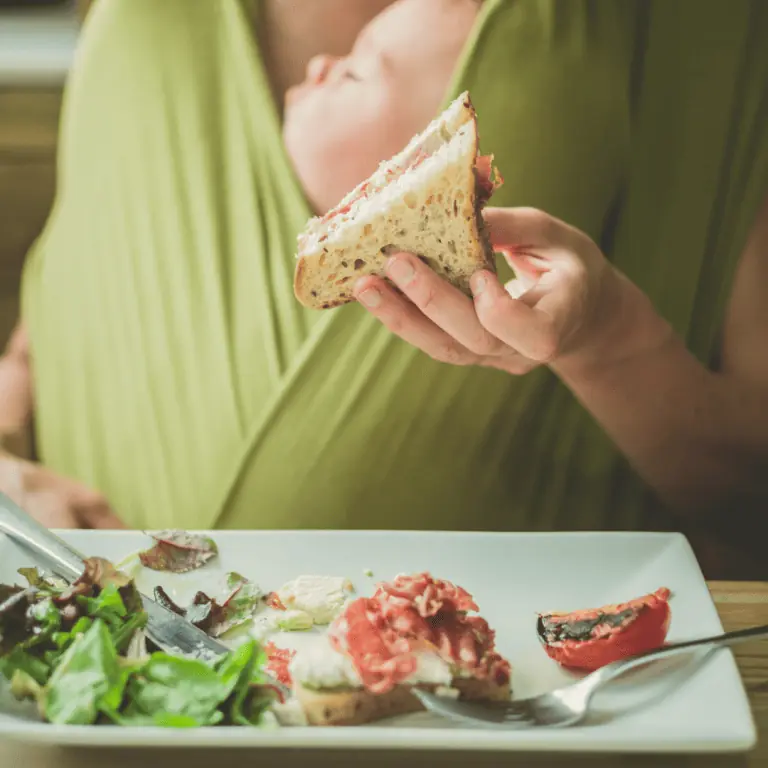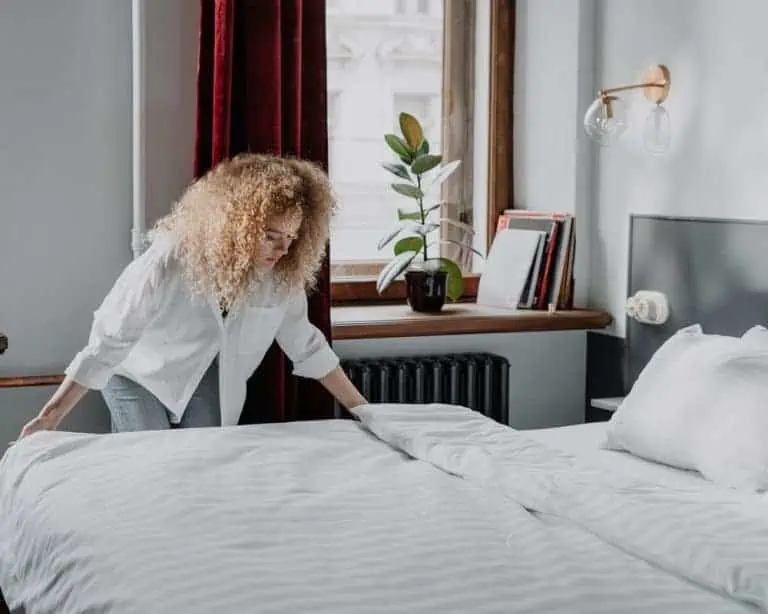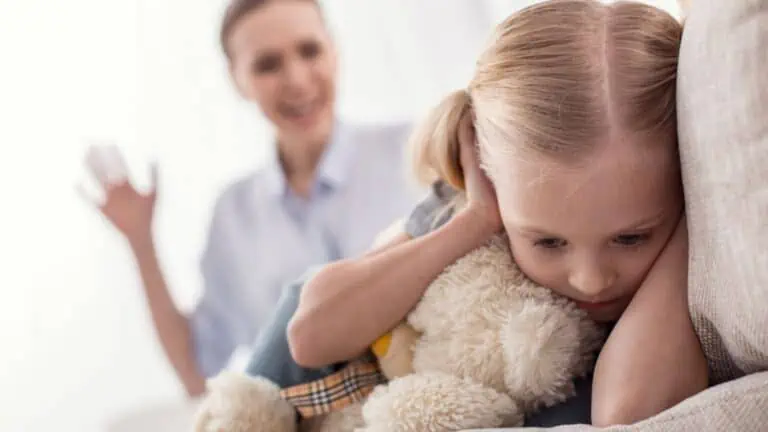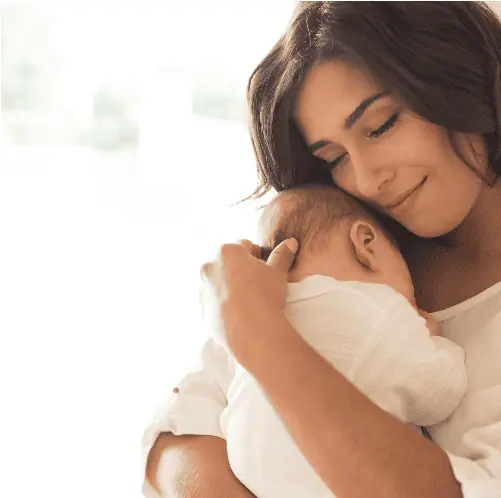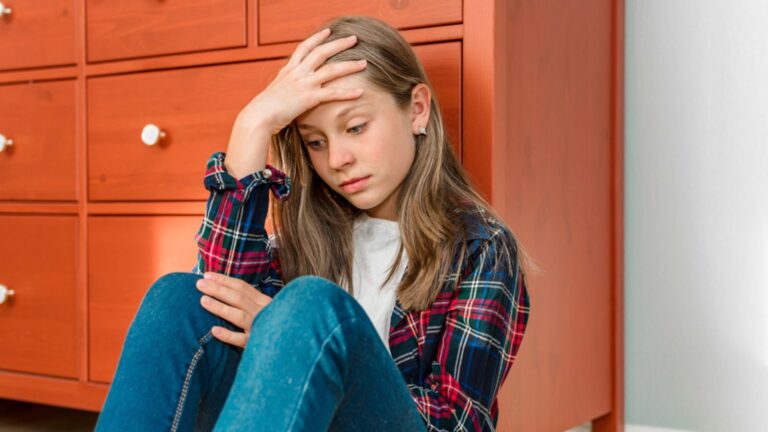Safe Sleep for Newborns: 7 Tips
This post may contain affiliate links. As an Amazon Associate, I earn from qualifying purchases.
One of the most important things when it comes to baby care is to make sure that a baby is sleeping safely! But what does that mean in practice, and how to develop safe sleeping habits is a question that bothers many new parents. If you are one of them, you would be interested to read about safe sleep for newborns and how to make sure you are doing things correctly!
There is no greater joy for new parents than bringing their newborn home. But after the initial excitement, many people realize that they are left with many questions, especially about sleep, and they have no clue where to look for answers (hint: please talk to your pediatrician first). This understanding then leads to many parents having various worries and fears.
Find out everything you need to ensure that your bundle of joy sleeps safely in this article- including the ABCs of safe sleep and other practical tips.

Related read: Infant Sleep and Its Relation with Cognition and Strength
The ABCs of Safe Sleep
According to the American Academy of Safe Sleep (AAP), safety starts with a simple “ABC.” The ABCs of safe sleep stands for:
- Alone
- Back
- Crib
In summary, the AAP recommends that parents put their babies to sleep on their backs every time they sleep. This reduces the risk of SIDS (more on that below). Other safe sleep practices include using a firm sleep surface, avoiding soft bedding, avoiding co-sleeping, and not smoking around the baby to avoid other sleep-related infant deaths.
Common Misconceptions, Worries, and Fears
Myth #1: Babies Sleep Through the Night
Many parents worry about their little one’s sleeping patterns because they’re sleep-deprived. Even before they become parents, most people know that babies spend a lot of time sleeping. But, they are exposed to a lot of unreliable information, which leads them to believe there are specific moments when changes in a baby’s sleeping habits should occur. Thus, they believe all babies start sleeping through the night when they are about six months old. It is, however, a total misconception since each baby is different.
Myth #2: Extreme Fear of SIDS
Another fear that plenty of parents experience is related to the risk of their newborn dying while sleeping. If you find yourself hovering over your little one while she or he is sleeping or shaking them because you are not sure they are breathing, you are not the only one. In recent years we are receiving a lot of information about Sudden Infant Death Syndrome (SIDS).
Various research on sleep-related infant death can freak us out and make us obsessively check on our babies.
Focus on What You Can Do Instead
However, instead of obsessing about these things, experts advise parents that it is better to focus on creating a safe environment for safe sleep for newborns. Besides learning about safe positions for newborns to sleep and safe ways for newborns to sleep, parents should get informed about the best crib mattress. Experts say that besides that, parents need to make sure to take care of their mental health, and in part, it means that they need to shift their attention toward getting informed and providing safe places for newborns to sleep to reduce the risk of Sudden Infant Death Syndrome (SIDS).
Related read: How to Get Baby to Sleep in Crib
Tips for Safe Sleep for Newborns
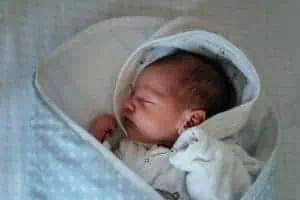
1. Babies Should Sleep On the Back
It is a rule without an exception when it comes to preventing sudden infant death syndrome (SIDS). Babies should sleep exclusively flat on their backs from the moment they are born to their first birthday (or until they can safely roll independently). It is proven that babies who sleep on their backs have a much lower risk of SIDS than those sleeping on their sides or stomachs. You might be wondering if side sleeping is safe for newborns. The problem with side sleeping is that there is no guarantee they will stay on their side, as they can easily roll on their stomach. Some people worry about choking when babies sleep on their backs, but the risk is so negligible that babies with gastroesophageal reflux (GERD) can safely sleep on their backs.
2. Always Use a Firm Sleeping Surface
Another important rule is that the crib your baby will sleep on has to be firm (standard with today’s best bassinets and cribs). Some worry that the baby won’t sleep comfortably on such a hard surface. However, this is a total misconception. Additionally, whether you choose a bassinet, crib, or portable crib (play yard) for your child, you must ensure that it meets the safety standards of the Consumer Product Safety Commission (CPSC).
Besides that, you should use only fitted bedding and ensure that there isn’t anything like toys, pillows, or blankets in the crib. It is safe to start using blankets only when the baby reaches toddlerhood. If you are worried that the little one might be cold, you can use a sleep sack for babies. You might have heard about some products for safe sleep for newborns that reduce the risk of SIDS. Keep in mind that there isn’t evidence that can corroborate these claims and that you should use only CPSC-approved products.
Related read: 10 Questions You Should Always Ask When Shopping for Your Newborn
3. Don’t Bring Baby to Your Bed
While it is important to have a new baby in the same room as mom (or dad), some people believe it is safest if she or he sleeps with them in bed, known as bed sharing or co-sleeping. They think that by putting the baby in bed, they can keep an eye on the child and thus make sure everything is okay. It is essential to point out that sleeping with a newborn in bed is never safe (according to the AAP). It is also not safe to sleep with a newborn on the chest.
Some of you might wonder if co-sleeping is safe for newborns at all! We can say that if by co-sleeping you mean that you sleep in the same room but with separate beds, then yes, it is safe. Any other way of co-sleeping can be dangerous for the little one. You can bring your baby only to feed or comfort and place them back in their safe sleeping environment.
Related read: Cradlewise vs Snoo: Which Smart Crib is better?
4. It Shouldn’t Be Too Hot in Baby’s Room
Because covers are not allowed, plenty of parents worry about their precious babies being cold during the night. So they increase the heating. A temperature of about 70℉ or 20℃ is perfect for your baby’s bedroom. If you are worried that the baby will be cold, put her in a sleeping bag for babies (sleep sack).
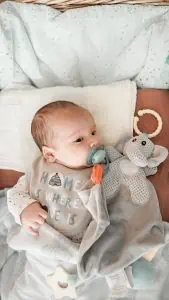
5. Sleeping with a Pacifier
Another thing parents wonder about is whether it is safe for newborns to sleep with a pacifier. Yes, giving them a pacifier before a nap or bedtime is even recommended. Sleeping with a pacifier reduces the risk of SIDS, even if it falls out of the baby’s mouth. If you are breastfeeding, it is best to wait for it to start going well. It usually takes two or three weeks for children and mothers to get used to breastfeeding. If your baby is formula-fed, you can use a pacifier whenever you want.
Related read: 6 Ways to Get Dad More Involved with Your New Baby
6. Make Sure Baby’s Bedroom is a Smoke-Free Zone
It goes without saying that you shouldn’t smoke in the place where your child is sleeping. You should designate only one room in your home for smoking and avoid going with your baby there. Also, try to ensure that you keep the baby away from smokers.
7. Other tips for Baby’s Sleep Environment
- Keep baby’s sleep area free of toys, even soft teddy bears
- As already mentioned, room sharing is encouraged until the baby is 1 year
- Keep baby’s face upright and clear of anything that might cover it (like a blanket, bumpers, or toy)
- To help babies stay comfortable in their own sleep space, you can try infant sleep products like sleep sacks, white noise machines, and black-out curtains
Bottom Line: A Baby Sleeps Safely in Their Own Space
We covered the most important tips for safe sleep for newborns that’ll help optimize baby sleep. A safe sleep environment is important, and every parent needs to take it seriously but without fear.
What are your experiences with the baby’s safe sleep? Do you follow the ABCs of safe sleep? Do you have some tips to share with us?


